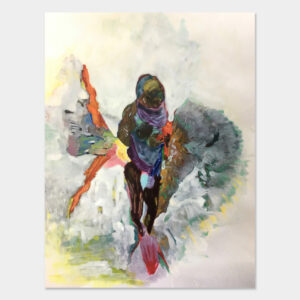Description
Claude Parent: Ville Escargot 9 in an original and unique ink drawing by renowned architect of the Oblique Function, Claude Parent. The title “Ville Escargot 9″” means “Snail City 9”. Signed by Claude Parent and dated 2009. It comes with a certificate of authenticity by the Claude Parent Archives in Paris, France.
Claude Parent (1923-2016) is a French architect known for his influential Oblique Function theory which he researched with Paul Virilio, and later built and experimented on his own. This theory, developed as early as 1963, challenged the obsolete orthogonal rule in architecture and inspired many renowned contemporary architects such as Jean Nouvel, Zaha Hadid, Frank Gehry, Daniel Libeskind and more. He is also the author of iconic houses and buildings in France. His drawings are also celebrated and considered by many as one of the most beautiful architectural graphic works. Architect Jean Nouvel considers him as the “Piranesi of our time”. But unlike Piranesi, whose constructed work was limited, Parent built a number of seminal projects. Backed by theory, his innovative work anticipated the Deconstructivists of the 1980s (Zaha Hadid, Coop Himmelb(l)au, Rem Koolhaas, Odile Decq, Thom Mayne) and later the digital avant-garde (Asymptote Architecture, Reiser + Umemoto). He won the Grand Prix National de l’Architecture in 1979 and was elected to the French Académie des Beaux-Arts in 2005. His drawings, models, writings and plans are present in prestigious art museum collections in Europe and the US such as the Pompidou Center, the San Francisco Moma, the New York MoMA, the Cité de l’Architecture et du Patrimoine, the Heinz Architectural Center at the Carnegie Museum of Art and more. Visit Claude Parent Archives to learn more: www.claudeparent.fr
Claude Parent: Ville Escargot 9
India ink on paper, 21cm x 29.7cm (8.27″ × 11.69″).
Signed original
Unframed.
Other original signed drawings by Claude Parent on The Art Motion:
Ville Oblique rebroussée
Fourches
Architecture Principe #9







